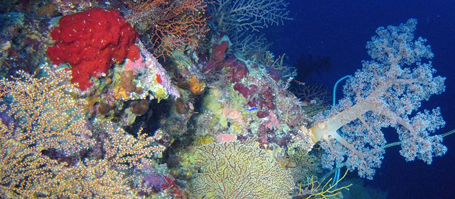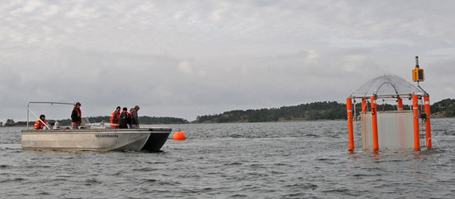Scientists from Kiel, Bremen and Halifax have now published a research study in the international journal “Nature” showing that widely applied methods are part of the problem.
Of course scientists like it when the results of measurements fit with each other. However, when they carry out measurements in nature and compare their values, the results are rarely “smooth”. A contemporary example is the ocean’s nitrogen budget. Here, the question is: how much nitrogen is being fixed in the ocean and how much is released? “The answer to this question is important to predicting future climate development. All organisms need fixed nitrogen in order to build genetic material and biomass”, explains Professor Julie LaRoche from the GEOMAR | Helmholtz Centre for Ocean Research Kiel.
Despite scientific efforts, the nitrogen budget suffers from an apparent dilemma. The analysis of ocean sediment as a long-term climate archive has shown that the amounts of fixed nitrogen equalled those of released nitrogen for the past 3000 years. However, modern measurements in the ocean demonstrate that the amounts of released nitrogen exceed the amounts of nitrogen being fixed. These results leave a “gap” in the nitrogen budget and show inconsistencies between past, long-term reconstruction and short-term measurements.
In 2010, the GEOMAR microbiologist Wiebke Mohr pointed out that these inconsistencies could be partially due to the methods widely used to measure modern biological nitrogen fixation. Following this finding, scientists from GEOMAR, Christian-Albrechts-University of Kiel (CAU), Max Planck Institute for Marine Microbiology (MPI) Bremen and Dalhousie University in Halifax (Canada) tested a new approach in the Atlantic Ocean which had been suggested by Mohr: The results of the study are now presented in the international journal “Nature”.
The study, which was funded by the Collaborative Research Centre 754 and the SOPRAN project, was carried out aboard the German research vessels METEOR and POLARSTERN where the participating scientists took water samples at various spots in the tropical and equatorial Atlantic and the temperate South Atlantic. At each station, one sample was treated with the widely applied “old” method and one sample with the new method for assessing nitrogen fixation. The samples were then measured at the MPI Bremen. “The results clearly showed that the old method very distinctly underestimated the nitrogen fixation rate by certain microorganisms”, says GEOMAR scientist Tobias Groβkopf, first author of the “Nature” article. The new method measured rates that were between 62 and 600 percent higher than with the old method.
Groβkopf and his colleagues also analyzed the composition of the microbial community and found a correlation between the kind of microorganisms in the water and the difference in rates that the two methods revealed. “With the old method, the rate measured changes according to where the microorganisms live, closer to the surface or deeper in the water. The new method circumvents this bias”, Groβkopf emphasizes. The “gap” in the nitrogen budget, however, cannot be entirely closed even with improved measurements of nitrogen fixation. “This is also due to the fact that we still don’t know all the microorganisms responsible for all these processes”, Groβkopf says. Professor Ruth Schmitz-Streit, microbiologist at the CAU and co-author of the “Nature” article, adds: “Within the Collaborative Research Centre 754 we just identified seven new clusters of nitrogen-fixing microorganisms, and many species are still waiting to be found.”
For Professor Julie LaRoche, who leads the research group at GEOMAR, this study is an important demonstration that scientific methods have to be carefully tested before their application. During an international workshop at GEOMAR in February 2012 LaRoche already advocated uniform and reliable methods in the analysis of biogeochemical fluxes in the ocean. “We have to work globally on a common basis in order to compare our results”, LaRoche highlights.
Reference
Großkopf, T., W. Mohr, T. Baustian, H. Schunck, D. Gill, M. M. M. Kuypers, G. Lavik, R. A. Schmitz, D. W. R. Wallace, J. LaRoche (2012): Doubling of marine N2 fixation rates based on direct measurements. Nature, 488, http://dx.doi.org/10.1038/nature11338
Contact:
Prof. Dr. Julie LaRoche (GEOMAR, RD2-Biological Oceanography), jlaroche@geomar.de
Jan Steffen (GEOMAR, Communication & Media), Phone: +49 431 600-2811, jsteffen@geomar.de
…



